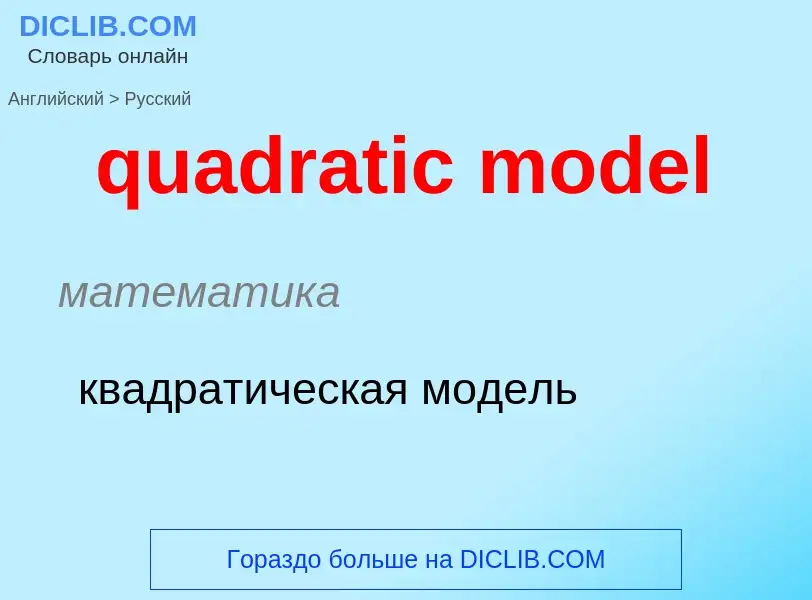Перевод и анализ слов искусственным интеллектом ChatGPT
На этой странице Вы можете получить подробный анализ слова или словосочетания, произведенный с помощью лучшей на сегодняшний день технологии искусственного интеллекта:
- как употребляется слово
- частота употребления
- используется оно чаще в устной или письменной речи
- варианты перевода слова
- примеры употребления (несколько фраз с переводом)
- этимология
quadratic model - перевод на русский
математика
квадратическая модель
математика
уравнение второй степени
общая лексика
уравнение второй степени
квадратное уравнение
строительное дело
квадратное уравнение, уравнение второго порядка (второй степени)
Определение
Википедия
In algebra, a quadratic equation (from Latin quadratus 'square') is any equation that can be rearranged in standard form as
where x represents an unknown value, and a, b, and c represent known numbers, where a ≠ 0. (If a = 0 and b ≠ 0 then the equation is linear, not quadratic.) The numbers a, b, and c are the coefficients of the equation and may be distinguished by respectively calling them, the quadratic coefficient, the linear coefficient and the constant coefficient or free term.The values of x that satisfy the equation are called solutions of the equation, and roots or zeros of the expression on its left-hand side. A quadratic equation has at most two solutions. If there is only one solution, one says that it is a double root. If all the coefficients are real numbers, there are either two real solutions, or a single real double root, or two complex solutions that are complex conjugates of each other. A quadratic equation always has two roots, if complex roots are included; and a double root is counted for two. A quadratic equation can be factored into an equivalent equation
where r and s are the solutions for x.The quadratic formula
expresses the solutions in terms of a, b, and c. Completing the square is one of several ways for deriving the formula.Solutions to problems that can be expressed in terms of quadratic equations were known as early as 2000 BC.
Because the quadratic equation involves only one unknown, it is called "univariate". The quadratic equation contains only powers of x that are non-negative integers, and therefore it is a polynomial equation. In particular, it is a second-degree polynomial equation, since the greatest power is two.




